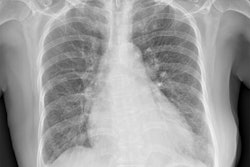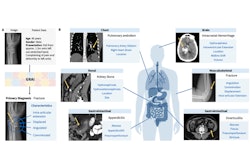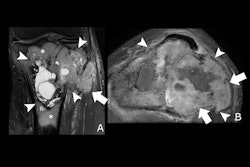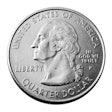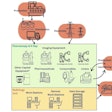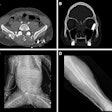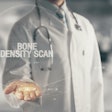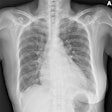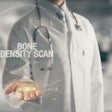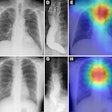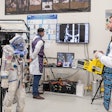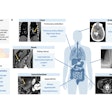Implementing the American College of Radiology's (ACR) Bone-RADS has its pros and cons depending on the experience of radiologists, according to research published October 17 in Clinical Radiology.
A team led by Jiufa Cui, MD, PhD, from the Affiliated Hospital of Qingdao University in Shandong, China, found that Bone-RADS improved diagnostic accuracy for junior and attending physicians compared to visual assessment. However, it also reduced accuracy for senior physicians.
“ACR Bone-RADS provides a valuable tool for the diagnosis and management of bone tumors, particularly enhancing the diagnostic capabilities of radiologists with less experience,” Cui and colleagues wrote.
ACR Bone-RADS version 2023 provides risk assessment and clinical management guidelines by evaluating key features such as patient history and imaging findings. Bone-RADS stratifies the risk of malignant bone tumors and offers management recommendations. However, the researchers noted that its effectiveness in identifying benign and malignant bone tumors has yet to be confirmed.
Cui and colleagues investigated the accuracy and interreader reliability of ACR Bone-RADS in classifying benign and malignant bone tumors of the extremities. They included observers with varying levels of experience.
The retrospective study included radiographs from 405 patients diagnosed with extremity bone tumors between 2017 and 2023. Of the tumors, 239 were benign and 166 were malignant.
Sixteen observers initially conducted a visual assessment, then received Bone-RADS training to assess relevant imaging features. The observers included eight junior physicians, four attending physicians, and four senior physicians.
Observers using Bone-RADS showed substantial agreement in differentiating between benign and malignant cases (kappa = 0.63).
And while junior and attending physicians achieved higher diagnostic accuracy after Bone-RADS training, senior physicians saw their collective accuracy decrease.
Mean accuracy of physicians before, after Bone-RADS training | ||
Observer | Before Bone-RADS training | After Bone-RADS training |
Junior physicians | 73.7% | 77.8% |
Attending physicians | 76.9% | 78.5% |
Senior physicians | 89.9% | 79.1% |
| *All results achieved statistical significance. | ||
Also, junior physicians had an average number of 59.1 indeterminate cases compared with 52.3 for attending physicians and 15.5 for senior physicians. While the team found no statistical significance between the junior and attending physicians in this area, junior physicians had significantly more indeterminate cases than the senior physicians (p = 0.008).
After applying Bone-RADS, junior physicians achieved an accuracy of 72.7% for indeterminate cases. This was significantly higher than the respective accuracies of attending physicians (63.6%, p = 0.017) and senior physicians (51.6%, p = 0.012).
Despite the limitations described in their study, the authors highlighted that Bone-RADS “facilitated more consistent interpretation of previously indeterminate cases, thereby supporting more standardized clinical decision-making.”
Future research will focus on assessing the value of Bone-RADS for intermediate tumors, the investigators wrote.
Read the full study here.





